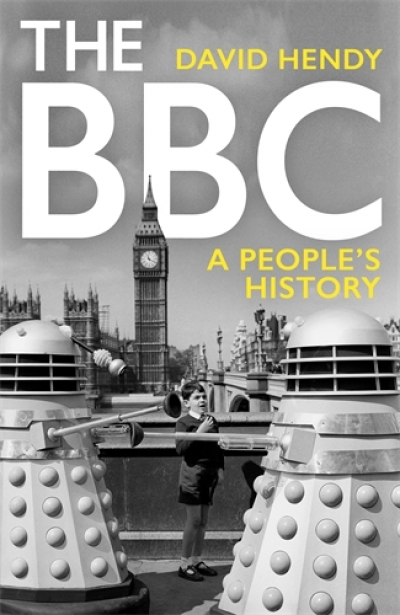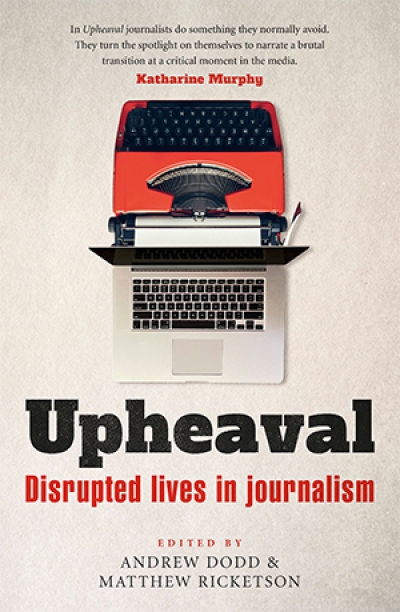Media
Lachlan Murdoch’s defamation proceedings against Crikey promised to be a test case on the new public interest defence. Following Murdoch’s discontinuation of his claim in April, the scope and application of the public interest defence to defamation await another appropriate vehicle.
... (read more)Bold Types: How Australia's first women journalists blazed a trail by Patricia Clarke
After she left journalism, Patricia Clarke turned to researching and writing books, beginning with The Governesses in 1985. Bold Types is her fourteenth book. The Canberra writer was a familiar figure at media history and other conferences, and in the National Library of Australia reading rooms, until Covid-19 at least. Her books, augmented by dozens of articles and conference papers, focus mainly on the lives, careers and letters of Australian women, especially writers and journalists. Clarke also writes about the history of her city, Canberra, an interest reflected in some of the fourteen entries she has produced for the Australian Dictionary of Biography. The ninety-six-year-old has devoted nearly ‘half a lifetime’ (to borrow the title of one of her tomes, about Judith Wright) to historical endeavours.
... (read more)This year, the British Broadcasting Corporation (BBC) celebrates its centenary as the world’s largest and oldest broadcasting institution (the US company NBC was founded four years later, in 1926). Whether it will reach its bicentenary, or even have another ten years of life in anything like its current form is a question facing other British institutions such as the Conservative Party, the monarchy, and indeed the Union of England, Wales, Scotland, and Northern Ireland itself. Placing the BBC among this group signals its estimable role in defining an imagined community but also the possibility that the existence of these other entities and their function in this process might be finite, subject to challenges from their own internal contradictions as much as from hostile external forces without.
... (read more)Facts and Other Lies: Welcome to the disinformation age by Ed Coper
On 9 March 2022, Russian forces at war in Ukraine bombed a maternity hospital in the city of Mariupol, killing three and injuring seventeen. In a confused response to international condemnation, Russia denied responsibility, designating these denunciations ‘information terrorism’ and ‘fake news’.
... (read more)Everything and Less: The novel in the age of Amazon by Mark McGurl
On 21 July 2021, one of the world’s richest men, Amazon founder Jeff Bezos, staged a press conference in the small town of Van Horn, Texas, the purpose of which was to boast about his recent ten-minute joy ride into space atop a rocket so comically penis-shaped that one could be forgiven for thinking that the whole exercise was intended as an outrageously expensive joke, albeit one that Mel Brooks would likely have rejected for its lack of subtlety.
... (read more)The Power of Podcasting: Telling stories through sound by Siobhán McHugh
A book about podcasting prompts an immediate question: what is the intended audience? Is it for listeners already devoted to the audio medium? Is it for storytellers who already podcast and want to enhance their craft? Or is it for those interested in podcasting but clueless as to how to go about it? The Power of Podcasting, by Siobhán McHugh, attempts to appeal to all three audiences, with mixed results.
... (read more)Upheaval: Disrupted lives in journalism edited by Andrew Dodd and Matthew Ricketson
If you have even a passing interest in the state of the Australian media, you may have come across the estimate that between four and five thousand journalism jobs were lost nationally in the past decade. This estimate suggests the scale of an industry-wide crisis in which successive rounds of redundancies became a feature of life in many newsrooms as media organisations turned to cost-cutting in their struggle to adapt to a rapidly changing landscape. The figure, which originated from the journalists’ union, the Media Entertainment and Arts Alliance, also points, albeit more obliquely, to the human impact of such cultural changes and the thousands of distinctive individual experiences that such numbers can elide.
... (read more)In early September, the High Court of Australia handed down its decision in Fairfax Media Publications v Voller. The case attracted significant public attention in Australia due to the high profile of the plaintiff. It also attracted not only national but international attention, due to the nature of the central issue: are media outlets liable for the comments posted on their public Facebook pages by third parties?
... (read more)The myth and reality of the Anzac legend has proven a perennial subject of inquiry and argument for over thirty years now, since the publication of Ken Inglis’s justly famous articles in Meanjin and elsewhere in 1964–65. These prompted a spirited exchange with the late Geoff Serle and others. More recently, John Robertson examined the Gallipoli campaign in terms of the myth (1990), and found the critics of Australian martial performance wanting, while Eric Andrews took the Anglo-Australian relationship between 1914 and 1918 to task (1993), and found duplicity and manipulation in the construction of the Australians’ image.
... (read more)Sound Citizens: Australian women broadcasters claim their voice, 1923-1956 by Catherine Fisher
In the era of perpetual Covid lockdowns, many of us can relate to the isolation of the mid-twentieth-century housewife. Like her, we’re stuck at home, orbiting our kitchens, watching the light move across the floorboards. Each day mirrors the last, a quiet existence spent mostly in the company of the immediate household. Yet whereas we can flee our domestic confines via Netflix or TikTok, last century’s housewife had fewer avenues to the wider world. There was reading, of course – books or magazines or newspapers – but this was usually reserved for the end of the day. For most waking hours, her hands and eyes were needed for cooking, cleaning, mending, childcare, and a thousand other tasks.
... (read more)









